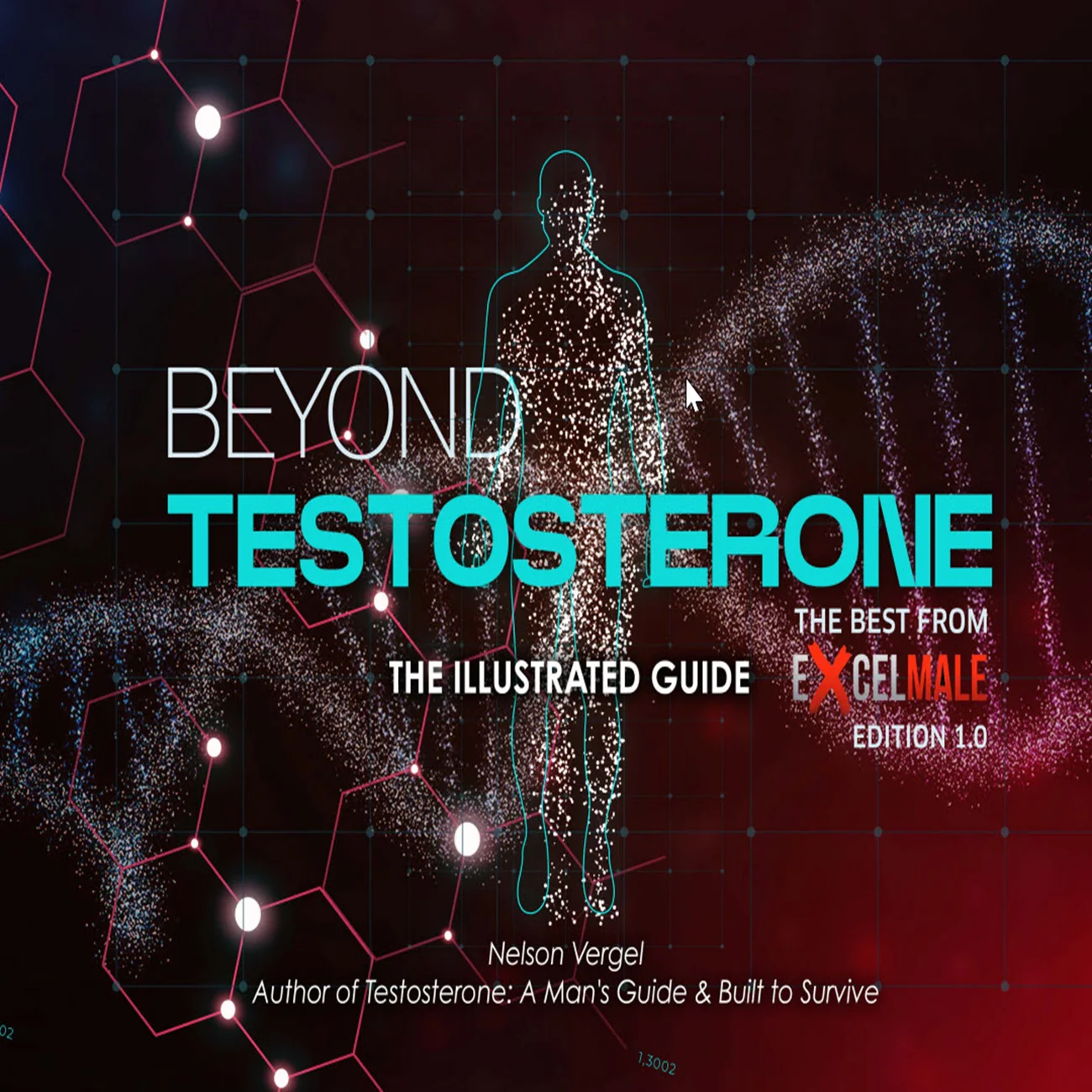Wondering what pregnenolone dose and frequency works best for optimizing your hormone balance on TRT? Pregnenolone, the "mother hormone" that serves as a precursor to numerous steroid hormones, requires careful dosing consideration due to its 3-4 hour half-life and complex metabolic pathways. Men on testosterone replacement therapy report using pregnenolone doses ranging from 10 mg to 400 mg daily, with protocols varying from once-daily dosing to split doses throughout the day to maintain steady blood levels. This thread explores how pregnenolone converts downstream into progesterone, DHEA, and the neurosteroid allopregnanolone, each offering distinct benefits for mood, cognition, and overall well-being. Forum members discuss the challenges of receptor downregulation with continuous dosing versus pulsed protocols that may preserve hormone sensitivity. Discover why some men thrive on low doses while others require higher amounts, how timing affects conversion pathways, and strategies to prevent the tolerance issues that can develop with long-term supplementation.
--------------------
Hi all,
I've been experimenting with pregnenolone for over a year now, with varied success. I seem to get benefits at 100mg (such as higher libido, more pronounced nighttime erections and better sleep); however, I don't get these results consistently. If I try to continue 100mg daily, the effects start waning by the second day (my theory for this is possibly progesterone elevating too high). I've also tried lowering the dose to 10mg, 25mg and 50mg; however, oddly enough, I only seem to get the benefits at 100mg. Extended use at the other doses eventually builds up and produces only negative effects. Anyway, I was wondering if anybody could clarify the half-life of pregnenolone, its sulfate derivative, and its conversion to progesterone and could offer any insight on dosing frequency.
By the way, I've experimented with just progesterone, but the benefits are less pronounced, and I become more susceptible to the negative effects.
(sorry for the long-winded ramble)

_________________________________________________
--------------------
Hi all,
I've been experimenting with pregnenolone for over a year now, with varied success. I seem to get benefits at 100mg (such as higher libido, more pronounced nighttime erections and better sleep); however, I don't get these results consistently. If I try to continue 100mg daily, the effects start waning by the second day (my theory for this is possibly progesterone elevating too high). I've also tried lowering the dose to 10mg, 25mg and 50mg; however, oddly enough, I only seem to get the benefits at 100mg. Extended use at the other doses eventually builds up and produces only negative effects. Anyway, I was wondering if anybody could clarify the half-life of pregnenolone, its sulfate derivative, and its conversion to progesterone and could offer any insight on dosing frequency.
By the way, I've experimented with just progesterone, but the benefits are less pronounced, and I become more susceptible to the negative effects.
(sorry for the long-winded ramble)
_________________________________________________
Pregnenolone Supplementation in Men: Dosage, Effects, and Considerations
This briefing document summarizes key themes and important facts regarding pregnenolone supplementation, primarily for men, drawing from discussions and articles within the "Excel Male TRT Forum." The information covers optimal dosing strategies, the hormone's metabolism, its potential benefits and side effects, and interactions with other hormones like progesterone and DHEA.1. Pregnenolone Metabolism and Half-Life
Pregnenolone is a precursor hormone, meaning it can convert into various other downstream hormones including progesterone, DHEA, allopregnanolone, and even cortisol. This metabolic versatility explains its varied effects.- Half-Life: Pregnenolone itself has a relatively short half-life of 3 to 4 hours. However, it is converted into pregnenolone sulfate, which has a longer half-life of 10–12 hours. This extended presence of its derivative allows for a more sustained effect in the body. (Nelson Vergel, Jul 27, 2021, #2)
- Conversion Pathways: A significant amount of pregnenolone is broken down into progesterone. Progesterone can then be further converted into cortisol or allopregnanolone, a potent GABAergic neurosteroid. (Nelson Vergel, Jul 27, 2021, #2)
- Liver Metabolism: Oral pregnenolone has high metabolism and low bioavailability, with significant conversion into other steroids occurring in the liver. (JA Battle, Jul 27, 2021, #4)
2. Dosing Strategies and Effects
Individuals respond differently to pregnenolone, with optimal dosing varying. The goal is often to maximize benefits while mitigating potential negative side effects, primarily due to progesterone accumulation.- Individualized Response: The original poster, Sozzing, found benefits only at 100mg (higher libido, pronounced nighttime erections, better sleep), while lower doses (10mg, 25mg, 50mg) eventually led to negative effects. However, 100mg daily also saw effects waning by the second day, theorized to be due to elevated progesterone. (Sozzing, Jul 26, 2021, #1)
- Progesterone Accumulation & Receptor Downregulation: High doses can lead to progesterone build-up, causing declining returns or negative consequences such as "tiredness, brain fog, mood swings." Strong doses might also "overstimulate neurosteroid receptors, hence lowering sensitivity over time." (Nelson Vergel, Jul 27, 2021, #2)
- Recommended Dosing Techniques to Preserve Results: Pulsed Dosing: "Every Other Day or 2-3x Weekly pulsed dosing may help to prevent too high progesterone levels while still preserving the advantages at 100mg." (Nelson Vergel, Jul 27, 2021, #2)
- Alternative Administration: "Sublingual or transdermal" methods avoid first-pass liver metabolism, potentially yielding "a more constant and predictable impact." (Nelson Vergel, Jul 27, 2021, #2)
- Split Dosing: Breaking a large dose (e.g., 100mg) into "3x daily" smaller amounts may lead to "a more favorable ratio between pregnenolone sulfate, progesterone, and dhea." (JA Battle, Jul 27, 2021, #4)
- Morning Low Dose with Occasional Higher Dose: "Try 10–25 mg daily then, once or twice a week, 100 mg." (Nelson Vergel, Jul 27, 2021, #2)
- Typical Endogenous Production: An adult "roughly makes around 30mg per day" of pregnenolone. (JA Battle, Jul 27, 2021, #4)
- Observed Benefits (Nelson Vergel): Taking 100mg twice daily (total 200mg/day) led to "deeper sleep and more fluidity in my speech." (Nelson Vergel, Jul 31, 2021, #12) His pregnenolone levels increased from "almost undetectable to 95 ng/dL" on 100mg/day, with a "normal" range for men being 10-200 ng/dL. (Nelson Vergel, Jul 31, 2021, #12)
- Study Doses: Some studies have used significantly higher doses, such as 50mg twice daily ramping up to 250mg twice daily for depression in menopausal/perimenopausal women and up to 500mg per day for bipolar depression. One study even administered 400mg per day. (Nelson Vergel, Jul 31, 2021, #10, #11, #13)
3. Interaction with Other Hormones and Conditions
Pregnenolone's effects are intertwined with other hormone levels and can be influenced by exogenous hormone therapies like TRT.- Progesterone: Simply taking progesterone is "not as effective" as pregnenolone, as pregnenolone supports multiple metabolic routes, not just progesterone production. Direct progesterone bypasses the "upstream neurosteroid balancing," potentially causing imbalances. (Nelson Vergel, Jul 27, 2021, #2)
- DHEA: Combining pregnenolone with 10–25 mg DHEA might help "offset the slow down caused by too much or low progesterone" because they share metabolic pathways. (Nelson Vergel, Jul 27, 2021, #2) However, Nelson Vergel personally does not take DHEA, stating "TRT has very little effect on DHEA and my levels are usually mid range. The data on DHEA and mood is all over the place. Not a strong believer." (Nelson Vergel, Jul 31, 2021, #16)
- TRT and LH Hormone: For individuals on Testosterone Replacement Therapy (TRT), the absence of LH hormone can affect pregnenolone conversion. "Pregnenolone taken in one large dose will convert more heavily to progesterone and pregnenolone sulfate." This is "not reliable especially while on trt" because "LH is needed to ensure proper conversion of pregnenolone." hCG might spur conversion but in different ratios than natural pulsatile LH. (JA Battle, Jul 27, 2021, #4)
- Estrogen (E2): Pregnenolone is "so far up in the cascade" that Nelson Vergel has "not seen any increase in E2" in his experience. (Nelson Vergel, Aug 8, 2021, #20)
- NMDA Receptors: High doses, especially while on TRT, can lead to increased pregnenolone sulfate, which "agonizes nmda receptors." The negative symptoms experienced by Sozzing were similar to his experiences with glycine, which is also involved with NMDA receptors. (JA Battle, Jul 27, 2021, #4; Sozzing, Jul 28, 2021, #6)
- Allopregnanolone and Emotion Regulation: Pregnenolone administration leads to elevated allopregnanolone, which is associated with "reduced activity in regions linked to the generation of negative emotion," "increased activity in regions linked to regulatory processes," and "enhancement of functional connectivity" in the brain. This can lead to "less self-reported anxiety." Allopregnanolone is a "potent allosteric modulator of the GABA(A) receptor with anxiolytic properties." (Nelson Vergel, Jul 31, 2021, #13, quoting a study)
4. Supporting Compounds
To manage potential side effects, particularly those related to progesterone accumulation and GABAergic effects:- "Increasing your consumption of magnesium, taurine, or ashwagandha might help control GABA-related side effects if progesterone accumulation is causing unpleasant consequences." (Nelson Vergel, Jul 27, 2021, #2)
5. Administration and Testing
- Administration Routes: Pregnenolone can be taken orally, subcutaneously, intravenously, intranasally, and topically/transdermally. Oral administration, however, has high metabolism and low bioavailability. (Nelson Vergel, Jul 27, 2021, #2, quoting "Pregnenolone and Progesterone for Men: Pharmacokinetics and Studies")
- Testing: Blood tests for pregnenolone and progesterone are available to monitor levels and guide dosing adjustments. (Nelson Vergel, Jul 27, 2021, #2, provides links to discounted labs)
Last edited by a moderator:












